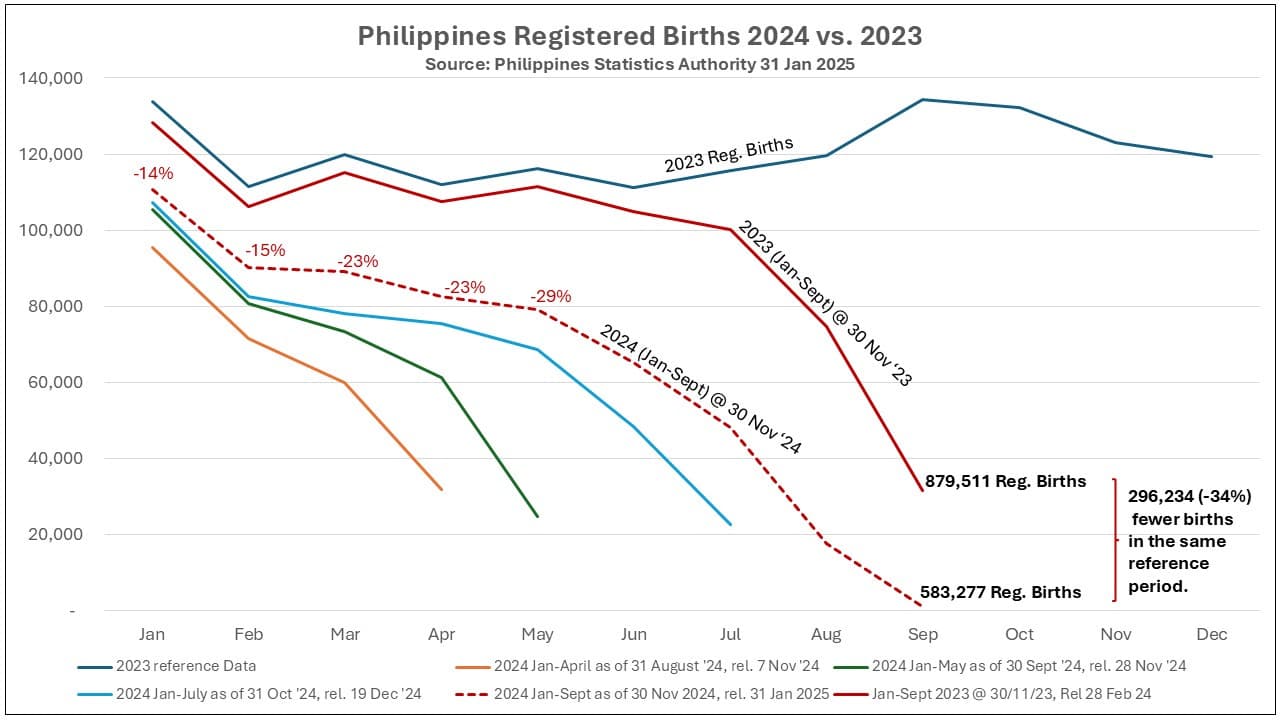US Poised for Lowest Birth Rate Decline Among Large Nations by 2025
In a striking contrast to global trends, the United States is on track to experience the lowest total fertility rate (TFR) decline among large nations between 2020 and 2025. This emerging data, highlighted by demographic analyst Annatar, suggests that a combination of pro-natalist advocacy and demographic factors may be contributing to this unexpected resilience in birth rates.
Background & Context
The total fertility rate is a crucial indicator of population growth, reflecting the average number of children born to a woman over her lifetime. As many developed nations grapple with declining birth rates, the U.S. stands out for its relatively stable fertility figures. In recent years, countries such as Japan and several European nations have witnessed significant drops in TFR, prompting concerns about aging populations and economic stagnation. However, the U.S. appears to be charting a different course.
Several factors contribute to this trend. Pro-natalist groups advocating for family-friendly policies, as well as a significant portion of the U.S. population residing in small towns, have been identified as key elements in this demographic landscape. These communities tend to maintain higher birth rates compared to urban centers, where economic pressures and lifestyle choices often lead to smaller families.
Key Developments
According to Annatar"s analysis, the U.S. is projected to see a TFR decline of only 2% from 2020 to 2025, a stark contrast to declines of 10% or more in other large nations. This resilience is largely attributed to the active involvement of pro-natalist organizations that advocate for policies supporting family growth, including paid parental leave, affordable childcare, and tax incentives for families.
Moreover, the ongoing cultural shift towards valuing family life, particularly in smaller towns where traditional family structures are more prevalent, plays a significant role. Many of these communities prioritize child-rearing and family cohesion, countering the trend of declining birth rates seen in larger metropolitan areas.
Broader Impact
The implications of this demographic trend extend beyond mere statistics. A stable or growing population can bolster economic growth, enhance workforce sustainability, and support social programs reliant on a balanced demographic structure. Experts suggest that the U.S."s ability to maintain its birth rates could provide a buffer against the economic challenges posed by an aging population, which is a growing concern in many developed countries.
Additionally, this trend may influence political landscapes, particularly as policymakers consider family-oriented legislation. The ongoing discourse surrounding reproductive rights and family support initiatives is likely to gain traction as the nation continues to navigate these demographic shifts. In the context of recent developments in political spheres, such as Democratic leaders breaking with Netanyahu to preserve pro-Israel stance ahead of 2024 Midterms, understanding public sentiment around family policies could become increasingly critical.
What"s Next
Looking ahead, the U.S. faces crucial decisions regarding family support policies and their potential long-term impact on fertility trends. As pro-natalist groups continue to advocate for supportive measures, the government may be compelled to respond with legislation that fosters family growth. This could include expanded tax incentives, improved healthcare access for mothers and children, and enhanced childcare options.
Furthermore, as the global landscape shifts, the U.S. may serve as a case study for other nations grappling with declining birth rates. Researchers and policymakers both domestically and internationally will be closely monitoring these developments to assess the effectiveness of pro-natalist strategies. The spotlight will remain on how these trends influence not just population metrics, but also broader socio-economic conditions in the years to come.



![[Video] At least 13 dead and 15 injured in Hong Kong's Wang Fuk Court fire](/_next/image?url=%2Fapi%2Fimage%2Fthumbnails%2Fthumbnail-1764162646074-5wakcr-thumbnail.jpg&w=3840&q=75)




![[Video] Vladimir Putin delivers speech in military uniform](/_next/image?url=%2Fapi%2Fimage%2Fthumbnails%2Fthumbnail-1764621642413-vh08a-thumbnail.jpg&w=3840&q=75)